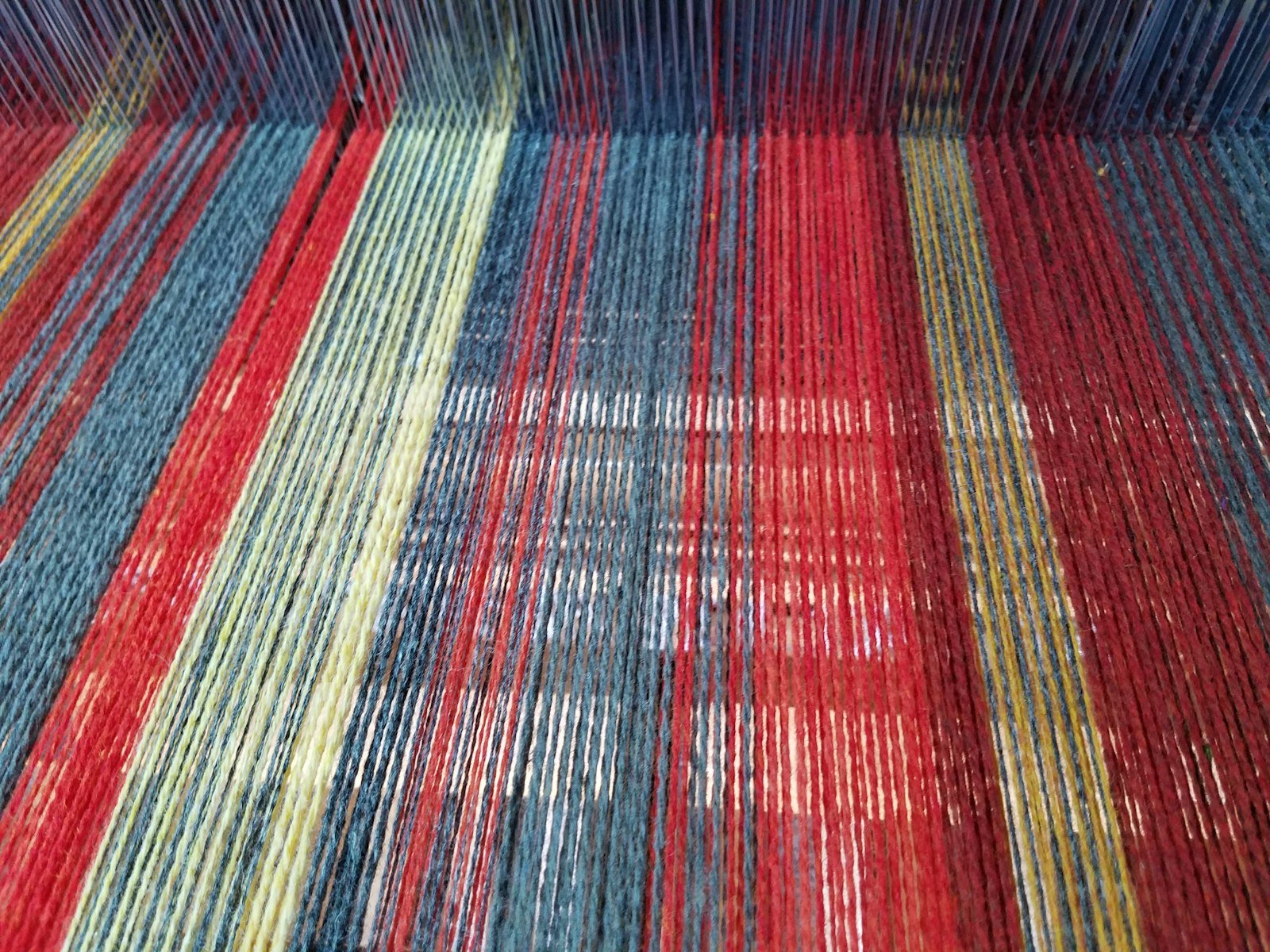
Projects tend to linger on my looms, and while time is a convenient excuse, the truth is that I love the journey of weaving more than the destination. Coming to the end of a project is bittersweet, and sometimes I avoid the ending just so I can walk by and admire the work in progress. (Cloth never looks so handwoven as when it is on the loom.) My favorite part of a project is the planning, setting out on a new adventure with my yarns and looms, tools, and books, all possibilities before me.
In one of my favorite non-weaving books, The Fellowship of Ghosts, contemporary author Paul Watkins recounts trekking through the mountains of Norway as he reads the accounts of writers who made the same trek in the nineteenth and early twentieth centuries. Watson has a gift for narrative, and it’s fascinating to hear how much and how little has changed between the times of the past travelers––the "ghosts" of the title––and his own. I can relate when I see pictures of women who climbed our Pacific Northwest mountains in the 1800s wearing thin-soled leather boots and wool dresses with full petticoats and tall starched collars. The magnificent views are the same, but thank goodness for microfiber clothing and Vibram soles!
Starting a weaving project, like writing a book or setting out on a trek, is an act of faith, committing resources, energy, and intellect against the vagaries of time. Like Paul Watkins crossing the mountains of Jotunheim, the "Land of the Giants," weavers walk in ancient paths. As I linger over my bookshelves, I feel the fellowship of weavers past and present who wrote to guide us on our weaving journeys, and I wonder what they would think of us.
Mary Meigs Atwater, Mary Black, Berta Frey, Else Regensteiner, and even weavers a decade ago could not have predicted how the weaving experience would change. Warp and weft still interlace as of old, but we have a choice of materials they would never have dreamed of. Many of us use computers to draft or weave, and many more use them to share what we make and what we learn. I chuckled this week as I read the introduction to my ten-year-old copy of The Weaver's Companion, in which Linda Ligon and Marilyn Murphy urge us to treat this treasury of weaving details as our own personal Rolodex. My Rolodex is long gone, but my Weaver's Companion holds an honored place in my studio, and last weekend I loaded a digital copy on my iPad so it will always be at hand.
I think our foreweavers would be pleased that their books have stood the test of time, and they would be fascinated with our new tools. I think Mary Meigs Atwater would have taken to blogging like a duck to water. Just think how quickly ideas would have spread if she had been able to blog to the members of the ShuttleCraft Guild. I can see her sending .wif files of some fascinating Guatemalan motif to Mrs. Harriet Douglass for inclusion in the Guild bulletin, or smiling at the lively interchange we have today in print and bits and bytes. And if I imagine honestly, I can also hear her restless, no-nonsense spirit telling me to shut down the computer, quit philosophising, and finish my projects so that I can start a new weaving adventure. And so I shall. Some ghosts speak louder than others!


